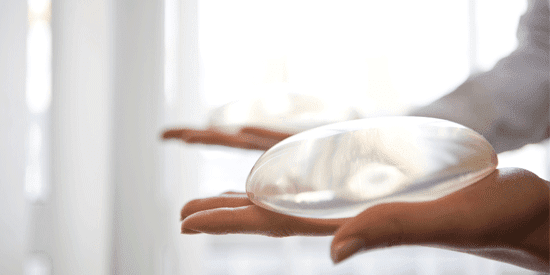It’s one of the biggest decisions many breast augmentation patients at our Louisville, Kentucky practice face: “Should I choose saline or silicone?” To help frame the decision and get to the answer that’s right for you, I always try to offer the same guidelines.
Both Are Very Safe
Patients often come in with a preconceived notion that silicone implants are somehow a “riskier” move in terms of their future health. That’s simply not true. My best guess is that this mindset comes from controversies over breast implants in the late 1970s and 1980s, but a lot has changed since then.
Newer generations of breast implants have since had to stand up to the rigors of clinical trials, all of which arrived at the same conclusion: Saline and silicone are both perfectly safe and effective for increasing the volume of the breasts. In the video below, I sat down with RealSelf to walk through the most meaningful differences between saline and silicone implants.
Silicone Costs More
There’s simply no way around it: Silicone implants are more expensive. How much more? For Sientra® breast implants, it can be a difference in the neighborhood of $500 to $1,000, depending on the options you choose for your implants.
As you’re exploring your options, though, I urge you to set aside the difference in price. Breast augmentation is a long-term transformation, and if you decide that silicone is what you want, then trust me, the additional cost will prove to be a worthwhile investment for years to come.
The Biggest Difference? How They Feel
For most patients, the most dramatic difference between saline and silicone is also the one they notice immediately. Holding a saline implant in one hand and a silicone implant in the other, most patients say that silicone feels softer and more natural. This is primarily because a saline implant is filled with a liquid (saltwater) solution, whereas a silicone implant is filled with a gel that more closely simulates breast tissue.
Still, the feel of the implant should not be the only driver of your decision. Saline has other advantages, such as a smaller incision (because the surgeon fills the implant after inserting it) and the ability to achieve the most precise and proportional size enhancement by making adjustments after the implant is in place.
It’s also possible to mitigate the less-natural feel of saline by placing the implant below the muscle. And in patients who already have enough natural breast tissue to cover the implant anyway, the feel of the implant becomes less important.
Consider the Longevity, Too
Another myth I hear often: Implants last 10 years. I’m not sure where it originated, but the longevity of an implant is not quite like clockwork. In many cases, patients remain happy with their implants for 15 or even 20 years. For others, certain life events such as weight fluctuation, pregnancy, or yearly mammograms can begin to put a strain on implants past the 10-year mark. At any rate, once you have had implants for 10 years, it’s a good idea to schedule an examination with a plastic surgeon to check on them.
I will say that in my experience, I have found that silicone implants tend to perform better in the long run. Saline implants are heavier, and over time they can begin to weigh the breasts down.
There’s no one right answer for everyone, but I hope that these guidelines are helpful as you consider your own journey.

Leave a Reply